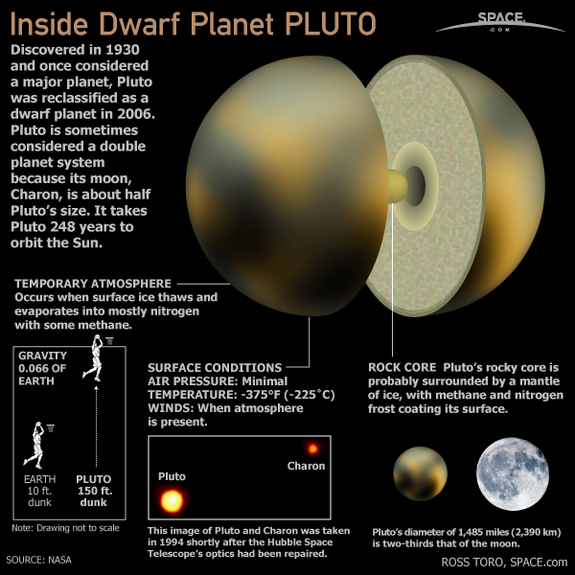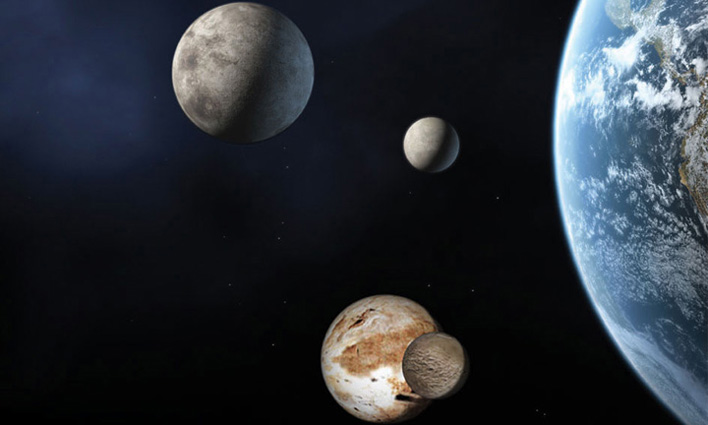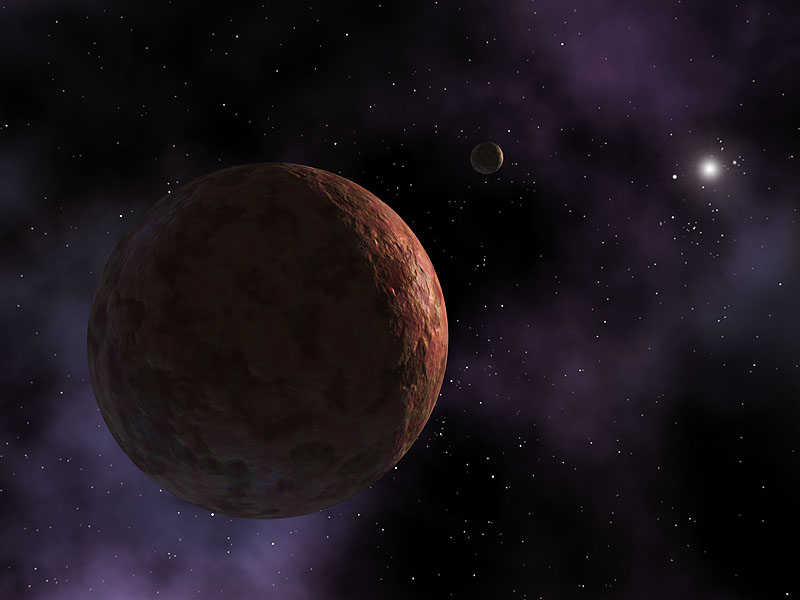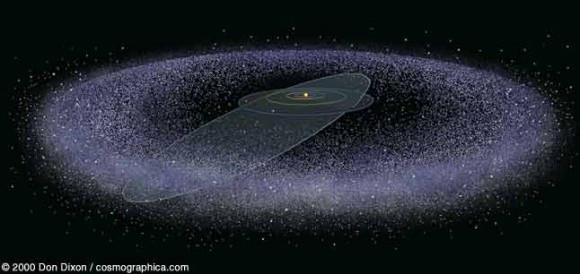Pluto and the Dwarf Planets


Pluto was discovered by Clyde Tombaugh on February 18, 1930 at Lowell Observatory in Flagstaff, AZ. The observatory’s founder, Percival Lowell, had predicted a planet with a mass seven times that of Earth beyond Neptune’s orbit. However, at an apparent magnitude of 15, Pluto was 2.5 magnitudes too dim to be the expected planet. Pluto was originally classified as a planet but, with the discovery of similar objects, was reclassified as a dwarf planet in 2006. This is still a controversial issue, especially in the United States, because only four percent of the International Astronomical Union voted on the issue and Pluto was the first planet to be discovered in the United States.
Why Did Pluto Get Demoted?
Pluto and Plutinos
Pluto gets its name from the Roman god of the underworld. Because of its distance from Earth, studying it is difficult and astronomers can only estimate its size and appearance until New Horizons reaches it in 2015. Estimates of its diameter range vary between 2274 and 2390 kilometers and Pluto has an estimated mass of 1.31 X 10^22 kg.
In 1978, astronomers discovered a satellite they named “Charon,” the boatsman of the underworld who ferries spirits across the river Styx. Charon is the largest of Pluto’s moons, estimated to be 1207 km in diameter. Pluto and Charon are tidally locked and always present the same face to each other. This is similar to Earth’s Moon, which orbits at the same rate it revolves around its axis. In 2005, two smaller moons were discovered and named Nix and Hydra. A tiny moon known as P4 was discovered in 2011 and is estimated to be no more than 34 km in diameter. On July 11, 2012, a new moon called P5 was announced. It has an orbit 29,000 miles from Pluto, slightly farther than Charon’s orbit. In a February 2013 poll, astronomy fans picked the names “Vulcan” and “Cerberus” for the new moons.
Pluto orbits the sun in a 3:2 resonance with Neptune. This means that it makes two orbits at the same time it takes Neptune to make three orbits. Pluto shares this resonance with dozens of Kuiper Belt objects known as plutinos. One theory suggests that Uranus and Neptune actually formed closer to the sun than their current orbits. Gravitational interactions between Jupiter, Saturn and Neptune pushed Saturn and Neptune further out and Neptune pushed the plutinos out into the Kuiper Belt zone.
Pluto has a highly elliptical orbit that sometimes brings it closer to the sun than Neptune, as it was from 1979 to 1999. It is not at risk of colliding with Neptune at any time, however, because its orbit has a 17-degree inclination from the plane at which the planets orbit. At Pluto’s closest approach to the sun, methane and other frozen compounds on its surface evaporate and form a thin atmosphere. One Pluto year is equal to 248 Earth years.
Because of its distance from Earth, it is difficult to make observations about Pluto and its satellites. When New Horizons reached Pluto in 2015, astronomers obtained more accurate measurements of Pluto’s composition, mass and diameter along with some better images.
New Horizons Comes Out Of Hibernation
Some Images From New Horizons
The Dwarf Planets

The International Astronomical Union defines a dwarf planet as an object large enough to become spherical, but not massive enough to absorb all the other objects in its path. Famous dwarf planets include Pluto and its moon Charon, the larger Eris, and the asteroid belt object Ceres.

Eris is the largest dwarf planet discovered so far. Discovered in 2003, its diameter is 4% larger than Pluto and it is 27% more massive. Its name comes from the Greek goddess of war and strife and its discovery led to the debate over Pluto’s status. It has one satellite named Dysnomia, from Eris’ daughter and the demon spirit of lawlessness. Eris and Dysnomia were originally given the temporary names of “Xena” and “Gabrielle” from the TV show “Xena: Warrior Princess.”

Sedna is the farthest dwarf planet from the sun discovered so far. It is three times as distant from the sun as Pluto is and many astronomers believe that it is very similar to objects predicted to be in the theoretical Oort cloud. It is red-tinged, implying some iron content, and approximately 75% the mass of Pluto. There is some indirect evidence that it may have a satellite.

Ceres is the only dwarf planet located in the asteroid belt. It is the largest asteroid belt object with a diameter of about 975 by 909 kilometers and contains one third of the mass in the asteroid belt. It was the first asteroid belt object to be discovered and was first observed by an astronomer-monk named Giuseppe Piazzi. He announced its discovery on January 1st, 1801. It had been hypothesized that a planet existed in the gap between Mars and Jupiter and some astronomers still believed that the material in the asteroid belt could have formed a planet if not for Jupiter’s influence. It was named for the Roman goddess of the harvest and, like Pluto, was initially classed as a planet and then demoted.
The Dawn Probe
Leonard Nimoy narrates a short video about the Dawn Probe’s mission to the asteroid belt.
The Kuiper Belt

Pluto is located in the Kuiper Belt, a zone beyond Neptune that was predicted by astronomer Gerard Kuiper in the 1950s. It is estimated to contain more than 100 million objects at least 1 kilometer in diameter. Some, like Pluto, are more than 1000 kilometers across. The majority of objects in the Kuiper Belt are very similar to comets and are made up of frozen water, ammonia and hydrocarbons.
The Kuiper Belt is shaped like an elliptical, or oval-shaped, disk and located approximately 30 to 50 AU from the sun. It has never been studied up close, but the New Horizons probe is due to study other Kuiper Belts now that it’s swung by Pluto.









